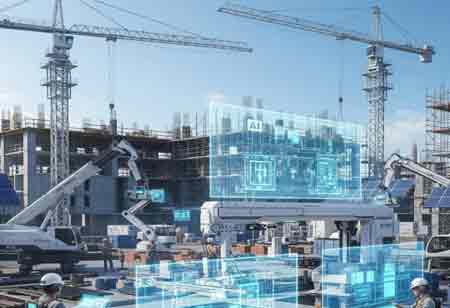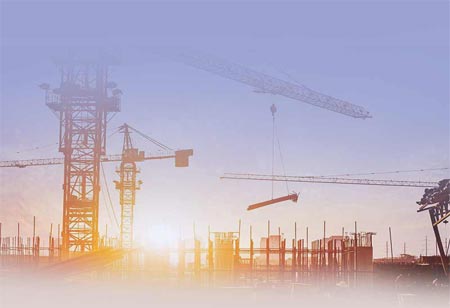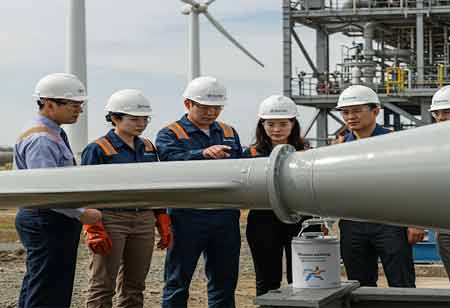Thank you for Subscribing to Construction Business Review Weekly Brief
Specials
- Apartment and Condominium Contractors Canada
- Decking Canada
- Architectural Glass Europe
- MEP APAC
- Construction Saudi Arabia
- German Apartment and Condominium Contractors
- Construction Law APAC
- Outdoor Construction
- Foundation Construction Canada
- MEP Canada
- Kitchen and Bath
- Cold Storage Construction APAC
- Precast Concrete Europe
- Construction Staffing Europe
- Pre-Construction Services
- Flooring System APAC
- Scaffolding Canada
- Swimming Pool Construction Canada
- Construction Management Canada
- Cold Storage Construction Canada
- Flooring Systems Europe
- Residential Construction
- Concrete Canada
- Construction Cladding Europe
- Construction Cladding APAC
- Concretes, Aggregates and Construction Materials APAC
- Concretes, Aggregates and Construction Materials Europe
- Commercial Contractors Europe
- Commercial Contractors APAC
- Dummy
- Construction Insulation, Coating and Waterproofing
- Construction Management APAC
- Landscaping Canada
- Construction Coating Europe
- Construction Tech Startups Europe
- Insulation Services Europe
- Mechanical Contractor Canada
- Mould Remediation and Testing Europe
- Swimming Pool Construction APAC
- Building Sealing Solutions Europe
- Construction Engineering Services
- Mechanical Electrical and Plumbing
- Roofing Systems Europe
- Architectural Glass APAC
- Startups APAC
- Construction Forensic and Owners Representative
- Flooring System
- Waterproofing APAC
- Wall Systems
- Safety and Compliance Europe
- Construction Equipment
- Modular and Prefab Construction
- Architectural Glass
- Construction MENA
- Construction Demolition and Recycling Europe
- Modular Construction Europe
- Construction Interiors
- Steel Building APAC
- HVAC
- Doors and windows
- Modular Construction APAC
- Building Information Modeling APAC
- Sustainable Construction APAC
- Building Restoration and Maintenance
- Commercial Contractors
- Specialty Construction
- Construction Engineering Canada
- Construction Engineering MENA
- Modular Construction Canada
- Construction Demolition Canada
- Roofing and Siding Systems
- Construction Latam
- Construction Staffing
- Roofing Systems APAC
- Construction Consulting
- Steel Building Europe
- Construction Demolition and Recycling APAC
- Safety and Compliance APAC
- Concretes, Aggregates and Construction Materials
- Construction Cladding
The Strategic Edge of Design-Build Execution
The design and build construction sector is evolving through sustainability, technology, and modern methods, enhancing collaboration, efficiency, and project quality in response to global demands.

By
Construction Business Review | Tuesday, July 15, 2025
Stay ahead of the industry with exclusive feature stories on the top companies, expert insights and the latest news delivered straight to your inbox. Subscribe today.
The design and build general construction sector stands as an increasingly sophisticated pillar of the global economy, continuously adapting to new demands and technological advancements. This integrated project delivery method, which consolidates design and construction responsibilities under a single entity, is experiencing robust growth and transformation. It offers a streamlined approach that not only fosters early collaboration and a unified vision from project inception to completion but also ensures the effectiveness of the process.
Driving Forces: Sustainability and Technological Integration
A significant driver is the global emphasis on sustainability and environmentally conscious construction. This shift is not just a trend, but a movement driven by stakeholders in the construction industry. There is a palpable shift towards green building practices, with a growing demand for energy-efficient designs, renewable energy integration, and the use of sustainable and low-carbon materials. This includes everything from incorporating solar panels and geothermal heating systems to exploring innovative materials like carbon-capturing concrete and bio-based products such as cross-laminated timber. The aspiration for net-zero energy buildings is becoming a standard, pushing the boundaries of traditional construction methodologies.
Technological integration is another transformative force sweeping through the design and build sector. Building Information Modeling (BIM) has solidified its position as a cornerstone technology, enabling comprehensive virtual design and visualization of projects. BIM facilitates intricate planning, clash detection, and enhanced collaboration among all stakeholders, significantly reducing potential reworks and improving project accuracy. The industry's impressive use of advanced technologies, particularly BIM, is a reassuring sign of the industry's commitment to quality, with its capabilities expanding through integration with cloud-based solutions, allowing for real-time data access and collaborative workflows across dispersed teams.
Beyond BIM, the industry is witnessing the widespread incorporation of advanced construction management software. These platforms centralize project data, blueprints, and documents, offering improved resource allocation, scheduling, and overall project oversight. The trend towards virtual design and construction (VDC) is expanding, utilizing virtual and augmented reality hardware to offer immersive visualization experiences, further refining designs before physical construction commences.
Modern Methodologies: Automation, Prefabrication, and Data
The rise of automation and robotics is also reshaping the operational landscape. While still evolving, the deployment of construction robots for repetitive or hazardous tasks, and the increasing use of drones for site surveys, progress monitoring, and inspections, are enhancing efficiency and safety. Three-dimensional (3D) printing, a technology gaining traction in the construction industry, offers the potential for faster prototyping and customized solutions, particularly for fabricating components and even entire structures. These automated solutions are often intrinsically linked with the growing prevalence of prefabrication and modular construction.
Prefabrication and modular construction methods are increasingly being embraced for their inherent advantages in controlling quality, reducing on-site waste, and accelerating project timelines. By manufacturing building components or entire modules in a controlled factory environment, the industry can achieve greater consistency and mitigate weather-related delays. This approach, when combined with digital tools like BIM, leads to highly optimized and efficient production processes, addressing tight construction schedules and space constraints in urban developments.
Data analytics and artificial intelligence (AI) are rapidly becoming integral to project planning and execution within the design and build framework. AI-powered tools are being utilized for predictive analytics, drawing on historical data to inform land use planning, optimize building designs, and enhance risk management. From intelligent resource allocation to automated maintenance systems within smart buildings, AI is poised to deliver significant cost savings and efficiency gains. The integration of Internet of Things (IoT) sensors within smart buildings further contributes to this data-driven environment, allowing for real-time monitoring of energy usage, identification of maintenance needs, and overall optimized building performance.
Market Dynamics and Future Outlook
The market dynamics for design and build general constructions are robust, driven by continued investments in infrastructure, residential, commercial, and industrial sectors globally. Government initiatives in various regions, particularly in developing economies, are propelling large-scale infrastructure projects and smart city developments, further fueling demand for integrated delivery models. These models, which involve collaboration between various stakeholders from the design to the construction phase, are becoming increasingly popular due to their ability to streamline project management and enhance efficiency. The industry's remarkable adaptability and resilience, even in the face of fluctuating economic conditions and material costs, are evident in its ability to leverage innovative practices and technologies.
The design and build general construction industry is in a period of exciting transformation. The synergistic adoption of advanced digital technologies, a strong commitment to sustainable practices, and the increasing embrace of modern construction methods like prefabrication are collectively defining its current state. This holistic approach, characterized by early collaboration and integrated responsibility, is enhancing project predictability, quality, and efficiency, setting a strong foundation for continued evolution and innovation in the built environment.





